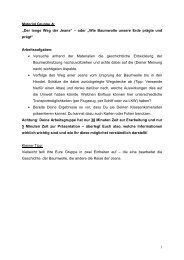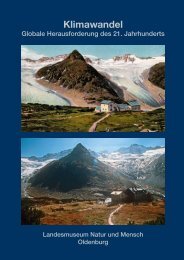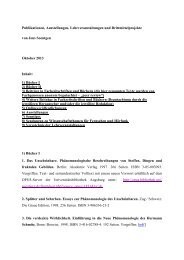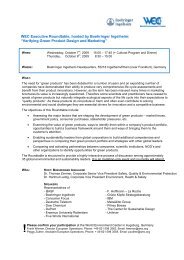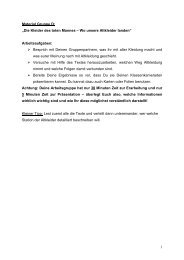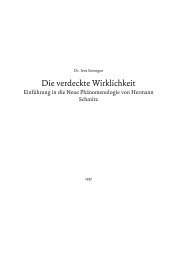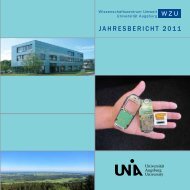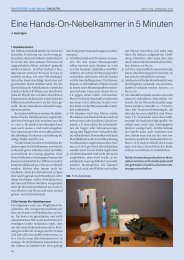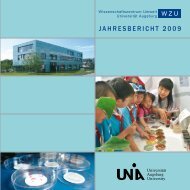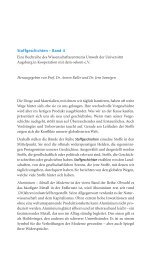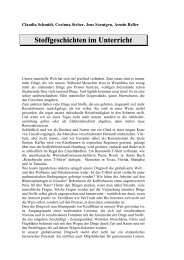Pricing organic cotton...
Pricing organic cotton...
Pricing organic cotton...
- No tags were found...
Create successful ePaper yourself
Turn your PDF publications into a flip-book with our unique Google optimized e-Paper software.
In this issue >>><br />
- Uganda’s <strong>organic</strong> <strong>cotton</strong> journey<br />
- Meet an <strong>organic</strong> farmer<br />
- Root Capital’s rural finance<br />
- Latin America update from 3 countries<br />
- India – new TRACENET system<br />
- Special report from OBEPAB<br />
- Focus on Tanzania’s value chain<br />
- Grolink Training Course<br />
Engage<br />
Connecting <strong>organic</strong> <strong>cotton</strong> farming communities<br />
Organic Exchange Monthly Farm Bulletin Issue 6, December 2010<br />
Welcome back. Hard to believe this is<br />
the sixth issue of ‘Engage’! We hope you<br />
are enjoying your monthly bulletin as much<br />
as we are enjoying preparing it for you.<br />
With each new issue we are seeing more<br />
and more people want to be part of the<br />
Engage community and coming forward<br />
with their story.<br />
This month we return to our regional<br />
updates. We also have a special report from<br />
Root Capital; about a financing model that<br />
might hold a key to building better value<br />
chains and greater stability through<br />
financial incentives.<br />
Our focus this month is Africa: starting with<br />
LaRhea Pepper and Ashley Currin’s visit to<br />
Uganda. We take a closer look at how<br />
Tanzania can take us from farm-to-fashion<br />
all before leaving the country! OBEPAB’s Dr<br />
Davo Simplice brings us a sobering account<br />
of how <strong>cotton</strong> pesticides are contaminating<br />
local food in Benin, leading to sickness and<br />
even death. More needs to be done to<br />
prevent these tragedies occurring.<br />
This month we hear from Suzanne Elise<br />
Placide Tama, an <strong>organic</strong> <strong>cotton</strong> farmer<br />
from Benin and the Coordinator of the local<br />
Association of Strong and Active Women.<br />
‘Meeting’ Lydie N’tcha (last month) and Ms<br />
Tama now has been a highlight for me, and<br />
brings home the role leaders, such as these<br />
two women, play in their communities.<br />
I know we will continue to meet progressive<br />
people in the new year through our growing<br />
‘Engage’ community and we at Textile<br />
Exchange look forward to hearing about<br />
your experiences as <strong>organic</strong> producers and<br />
environmental stewards!<br />
<strong>Pricing</strong> <strong>organic</strong> <strong>cotton</strong>...<br />
Although <strong>organic</strong> agriculture offers many advantages to people and planet, the<br />
price advantage is the most pressing factor for <strong>organic</strong> farmers. As you know, the<br />
price of <strong>organic</strong> is linked to the price of conventional <strong>cotton</strong> sold on the<br />
commodity market. The <strong>organic</strong> ‘premium’ (and other benefits sometime built-in<br />
to contracts) makes producing <strong>cotton</strong> <strong>organic</strong>ally, and certifying the product, a<br />
good financial investment.<br />
However, these are extraordinary times, conventional <strong>cotton</strong> stocks are down and<br />
the commodity price has shot up. This should be a good thing for growers And<br />
indeed, one may argue it is! It’s a seller’s market right now.<br />
But what has been brought to our attention is the potentially damaging impact this<br />
situation is having on the <strong>organic</strong> <strong>cotton</strong> sector. Farmers are seeing their carefully<br />
tended <strong>organic</strong> harvest end up in conventional supply chains. Organic <strong>cotton</strong><br />
procurers are struggling to meet their usual premium commitments (which don’t<br />
make sense anymore) and on top of this the lag time for <strong>organic</strong> buyers to respond<br />
to the market is adding a further complication.<br />
If <strong>organic</strong> <strong>cotton</strong> is to be secure in a stable, appropriate value chain we need to step<br />
back from the commodity price rollercoaster and establish working partnerships<br />
which deliver win-win situations for all. We invite <strong>organic</strong> <strong>cotton</strong> players to join us<br />
in finding solutions to do <strong>organic</strong> business differently... to do business better!<br />
Best wishes and happy holidays,<br />
Liesl Truscott, Director, Farm Engagement<br />
bioRe ® /Böthling
Feature >>> Organic <strong>cotton</strong> in Uganda – helping rebuild lives<br />
In the farm engagement program we strive to be a bridge between farmers groups and the larger<br />
textile industry, Feature and recognize >>> the importance in the sharing stories from our visits with farm<br />
projects. In September of this year, Textile Exchange’s Senior Director LaRhea Pepper, and Ashley<br />
Currin had the opportunity to visit Uganda and see the difference that <strong>organic</strong> <strong>cotton</strong> makes in<br />
the life of East African farmers. Here Ashley shares her experiences and insight...<br />
Ashley Currin, Value Chain Specialist<br />
We drove 4 1/2 hours Northwest of Kampala with the rain pouring down, turning the roads into a reddish river. Children walk<br />
barefoot along the side, laughing and playing in their soaking school uniforms.<br />
Approaching the town of Lira, the signs of NGO’s line the road, and I am struck by how many international aid groups have a<br />
presence here. It should be no surprise, considering the recent history of the region. For the last two decades, civil war in the<br />
area has led to the displacement of more than 2,000,000 Ugandans from their homes. The children in the area have grown<br />
up in IDP war camps and now have the opportunity for a different life.<br />
After the immediate needs of medicine, food, water and<br />
shelter are met, there remains a complex dilemma<br />
about the best way empower sustainable development<br />
to a situation increasingly dependent on donor funding.<br />
For the projects the question was: how to bring<br />
economic activity into the area<br />
This district has the largest concentration of land under<br />
<strong>organic</strong> cultivation in the country. The surrounding<br />
region has the lowest use of agrichemicals in all of<br />
Africa, partly because of natural elements that manage<br />
pests. In Gulu district, Cotton Conservation Initiative<br />
with Invisible Children designed their program to work<br />
with small producers to become economically viable<br />
<strong>organic</strong> <strong>cotton</strong> farmers and self- sufficient after 3 years<br />
time.<br />
Above: Farmers for the Cotton Conservation Initiative/Invisible Children<br />
Below: Women’s Farming association, Lango and North Bukuti project<br />
During our visit with the projects, it became clear that<br />
the <strong>organic</strong> farming services supplement traditional aid<br />
by providing long-term solutions to the community.<br />
Near the town of Lira, the Lango and North Bukuti<br />
project introduced us to a women’s farming association.<br />
We listened to women explain that they are now able to<br />
pay school fees for their children because they receive a<br />
fair price for their <strong>organic</strong> <strong>cotton</strong>. Others told of how<br />
they had more to feed their family then their<br />
conventional neighbours because of rotation crops.<br />
We heard additional farmers who hoped to join the <strong>organic</strong> projects after seeing the training, farm tools and decent return that<br />
was provided. A fundamental part of the <strong>organic</strong> model is the extension and support services that are offered, benefits absent<br />
in conventional practices. Demonstration plots are vital to show techniques for others to replicate on their land. These ‘farm<br />
field schools’ include information from tilling the soil, plowing, preparing the land, planting, intercropping, and further<br />
assistance through to harvest. John Tembo, the project manager of CCI explains, “Don’t bury the seed, we bury a body but plant<br />
a seed” reminding us that the planting of seeds represents a vision for hope and investment in the future.<br />
The trip showed me that <strong>organic</strong> farming for many in Uganda symbolizes the resilience of a community, and act a means to rebuild<br />
their lives.
Feature >>> Nice to meet you!<br />
My name is... Suzanne Elise Placide Tama<br />
I am... the Coordinator of the local NGO AFVA (Association des Femmes Vaillantes et<br />
Actives - Association of the Strong and Active Women). Tel: + 00229 90 66 09 71/93 49<br />
93 49: e-mail: tamsuzi@yahoo.fr<br />
I live...<br />
in Banikoara, in the district of Banikoara, department of Alibori, in Benin.<br />
I have been involved in <strong>organic</strong> <strong>cotton</strong> production since ... Since 2008, through the<br />
NGO AFVA, which I created, I have been involved full time in the development of <strong>organic</strong><br />
production.<br />
I got started in <strong>organic</strong> <strong>cotton</strong> because... While I was working as a coordinator for a local NGO supporting development I<br />
realised that women producers did not have good access to crop inputs for <strong>cotton</strong> growing, except through their husbands. In<br />
addition, even if they do have access to the crop inputs they are still tied by the joint guarantee, as they are members of the<br />
village association. Furthermore, beyond the fact that they are not landowners, the land they are cultivating has a very poor<br />
fertility because of intensive farming.<br />
What actions have you undertaken to promote <strong>organic</strong> production in your area From 2002 to 2007, I was elected as a<br />
Councillor in the local authority. Then in 2005, I created AFVA whose purpose is to promote the development of women in<br />
their chosen professional activity in the region of Alibori and in Benin as a whole. This allows women to overcome their social<br />
discrimination, which has repercussions on their income and their wellbeing. While searching for new solutions, which could<br />
improve women producers’ quality of life, I was informed of the existence of an agricultural method caring for the<br />
environment: <strong>organic</strong> agriculture. I then contacted Helvetas in Benin to get more information, as they have a program for<br />
managing the natural resources. In 2008, when Alafia, the project for <strong>organic</strong> and fair-trade <strong>cotton</strong> was launched in the area<br />
around the natural reserve of Pendjari and they organised their planning workshop, I was invited by the associated directors<br />
of Helvetas to take part. Under their guidance, I made contact with the Regional Technical Advisor of Helvetas to prepare the<br />
next step. Once back in Banikoara, I presented the project to the women we were supporting and they immediately adopted<br />
it. The women engaged in <strong>organic</strong> production are mainly from the Peul tribe. This tribe is largely involved in cattle farming. In<br />
February 2008, we organised an exchange visit, sponsored by Helvetas, in Fada N’gouma in Burkina Faso. As a result of this<br />
visit 48 producers (30 women, mainly from the Peul tribe and 18 men) decided to get involved in <strong>organic</strong> <strong>cotton</strong> production.<br />
The total surface they were cultivating was almost 10 hectares. The results they obtained were very encouraging and<br />
generated a lot of interest in the local population. Because of this in 2009, three other communities, in the area where the<br />
NGO Potal Men acts, joined the campaign. The communities are Kerou, Kouande and Pehunco in the department of Atocora.<br />
The project then grew to 450 producers growing on 62 hectares. In 2010, the project has 669 producers (with nearly 40% of<br />
women and men producers from the Peul tribe) and a growing area of 197 hectares. Furthermore, in the Alibori region two<br />
new communities are currently joining the project, the communities of Segbana and Gogounou. So far, Ecocert International<br />
easily certifies the <strong>organic</strong> <strong>cotton</strong> we produce, thanks to the caring help of Helvetas.<br />
Some of the challenges we face... There are numerous challenges, but the major ones are:<br />
1. The consolidations of the acquired skills after the technical and financial partners have retired.<br />
2. The purchase of <strong>cotton</strong>seeds at the beginning of each season.<br />
3. The consideration of climate change on our production.<br />
4. The recognition of the <strong>organic</strong> <strong>cotton</strong> production by the National council of <strong>cotton</strong> producers.<br />
5. The subsidising of the production activity while waiting for payment from the Centrale de Sécurisation des Payments<br />
et de Recouvrement (CSPR).<br />
6. Easier access to land ownership for women.<br />
7. Local transformation development.<br />
What I would like to share with other farmers is... Women have to believe in themselves and endeavour to act in a way that<br />
would allow them to be part of the decision-making authorities.<br />
Written by Lazare YOMBI, Conseiller Technique Régional Programmes coton biologique et equitable,<br />
Helvetas, Burkina Faso
Jesse Last, Lending & Strategy<br />
Associate at Root Capital, tells<br />
us how their financing model<br />
can help build closer value chain<br />
business relationships with<br />
longer-term outlooks...<br />
Figure 1. Rural Missing Middle<br />
Spotlight >> Root Capital – rural finance<br />
Root Capital is a nonprofit social investment fund that provides capital<br />
and financial training to small and growing businesses in rural areas of<br />
Africa and Latin America. We work to bridge the gap between<br />
microfinance and corporate banking for farmer and artisan associations<br />
and private enterprises that source from small-scale producers. By<br />
extending capital, delivering financial training and strengthening market<br />
connections, Root Capital reaches remote populations that traditional<br />
banks have long overlooked – the so-called “Rural Missing Middle” (see<br />
Figure 1.).<br />
Our principal loan product is short-term trade credit, for which we use<br />
forward purchase contracts as the loan guarantee (Figure 2.) Root<br />
Capital will finance up to 60% of the value of the purchase order, with a<br />
credit term of between 4 and 12 months. Loan sizes ranges from<br />
$25,000 to $2 million and our trade credit loans are used by producer<br />
associations and private enterprises to cover working capital needs<br />
associated with fulfilling purchase orders in dollars, pounds and Euros.<br />
We also offer longer term loans for investment in equipment and<br />
infrastructure and to expand production.<br />
Figure 2. Root Capital Factoring Model<br />
Founding: 1999<br />
Root Capital Overview<br />
Mission: To pioneer finance for grassroots businesses<br />
that build sustainable livelihoods and transform rural<br />
communities in poor, environmentally vulnerable places.<br />
Disbursements: $200 million<br />
Clients: 282<br />
Loans: 777<br />
Repayment: 99%<br />
Headquarters: Cambridge, MA<br />
Associated Offices: Nairobi, Kenya; San Jose, Costa<br />
Rica, Lima, Perú; Managua, Nicaragua; Quetzaltenango,<br />
Guatemala; Chiapas, México<br />
Countries of Operation: 30 (15 in Africa including Mali,<br />
Burkina Faso, Uganda and Tanzania; 15 in Latin America<br />
including Peru, Colombia, and Nicaragua)<br />
Root Capital Investment Officer Richard Tugume with a Ugandan <strong>cotton</strong> grower<br />
Since our founding in 1999, Root Capital has applied this model in<br />
several industries, including coffee, cocoa, fresh produce, and <strong>cotton</strong>.<br />
We have disbursed more than $200 million via 777 loans to 282 clients,<br />
and we have a 99 percent repayment rate.<br />
One of the key characteristics of Root Capital’s model is the<br />
involvement of our clients’ buyers. We have developed close<br />
relationships with a number of leading corporations that source<br />
globally, including Starbucks, Green Mountain Coffee Roasters, General<br />
Mills and The Body Shop. Through partnership with Root Capital, these<br />
companies may benefit from more reliable supply chains, increased<br />
producer volumes, and the removal of producer financing from the<br />
company’s balance sheet.<br />
As Root Capital expands lending to <strong>organic</strong> <strong>cotton</strong> growers, we look<br />
forward to developing similarly strong relationships with leading players<br />
in the <strong>cotton</strong> value chain.<br />
For more information about Root Capital, please contact Jesse Last at<br />
finance@rootcapital.org.
Feature >>> Tracenet – A traceability<br />
system for India’s <strong>organic</strong> production<br />
Regional focus >>><br />
India<br />
By Prabha Nagarajan, Regional Director India, Textile Exchange<br />
The increased awareness in the export markets and a growing need for traceability<br />
and accountability of products, saw APEDA, the agency set up by the Ministry of<br />
Commerce to Christina promote Boecker, and regulate Sekem the export of agricultural and processed foods<br />
from India launch successful traceability programs for grapes ( Grapenet) and<br />
pomegranates ( Anarnet ) in the mid 2000s. This has now been followed by<br />
TRACENET, a pan India, web based system to enable regulation, compliance and<br />
monitoring of all <strong>organic</strong> production. The system was launched in May 2010 and<br />
became mandatory in June 2010. Prior to this APEDA (the Agricultural and<br />
Processed Food Products Export Development Authority) conducted more than 29<br />
training programs for stakeholders all over India. Trials have also been conducted<br />
and feedback sought before the formal launch.<br />
All the accredited certifiers have been co opted by APEDA to register all the<br />
operators who are engaged in <strong>organic</strong> agricultural production. These operators are<br />
assigned a unique 12 digit Registration number, and issued a Registration<br />
Certificate, after obtaining all the details such as name, address, area, scope of<br />
activity and number of farmers etc. It is well worth remembering that India has been<br />
the first country to introduce the concept of group farming, and that several farmers<br />
in one group get managed by one Internal Control System (ICS). It thus becomes the<br />
responsibility of the ICS to ensure data entry of all the farmers in the group for<br />
Tracenet. If this is not possible then the Certifying body would take on this<br />
responsibility.<br />
The ICS manager inspects individual famers and forwards the reports to the<br />
Certification Body for verification and issuing of Scope Certificate. All Scope<br />
certificates and Transaction Certificates carry barcodes with unique ID for the<br />
exporters and for the Consignment.<br />
Key advantages of Tracenet are:<br />
<br />
<br />
<br />
<br />
<br />
<br />
A user friendly software that<br />
can be used 24/7.<br />
Reduction in duplication of<br />
data capture.<br />
Instant reference to previous<br />
steps in supply chain is<br />
enabled.<br />
Built-in checks and balances<br />
that ensure compliance.<br />
Documents can be issued only<br />
by going through the<br />
software.<br />
Enables APEDA to trace<br />
details of a consignment right<br />
down to the plot level.<br />
Photo courtesy: bioRe, India<br />
Quite simply traceability would mean the ability to track back or trace the history of<br />
a product through recorded means, from farm to final product. APEDA lists the key<br />
principles of traceability as follows:<br />
<br />
<br />
<br />
<br />
Identify products, production batches or logistic units.<br />
Record all successive links in the supply chain between production batches and<br />
logistic units.<br />
Record traceabilty data throughout the supply chain.<br />
Provide the downstream partner with all the information required to ensure<br />
product traceability.<br />
Providing for the above, the features of Tracenet ensure that all key stakeholders<br />
from farmers, groups, ICS Certification Bodies and APEDA are well integrated.<br />
APEDA has also held review meetings in various locations in India with stakeholders<br />
to identify and iron out teething issues.<br />
The Tracenet thus offers system based traceability, and is expected to ensure a<br />
superior control of the production and certification system. The big challenge of<br />
dealing with a complex supply chain can be better dealt with. Indeed Tracenet can<br />
be seen as a bold and strategic initiative to put India firmly on the map for<br />
agricultural exports, especially <strong>organic</strong> produce such as <strong>cotton</strong>.<br />
Overpage: Find out how Tracenet works.<br />
“Quite simply traceability would<br />
mean the ability to track back or<br />
trace the history of a product<br />
through recorded means, from<br />
farm to final product.”
HOW TRACENET WORKS<br />
India<br />
Continued...<br />
For a Certifying Body:<br />
<br />
<br />
Certifying Bodies are assigned user names and passwords by APEDA.<br />
Using this to login Certifying Bodies can register an operator or group and<br />
issue a letter of registration to them.<br />
For an ICS Operator:<br />
<br />
<br />
<br />
<br />
<br />
<br />
<br />
<br />
Once the Letter of Registration is issued the ICS group will receive a<br />
password to enable them access the system.<br />
They will then enter all their farm and farmer details including name,<br />
address, and village, District, State and Taluk.<br />
Unique farmer and Farm Registration no is also generated by the system.<br />
Product details such as description, variety, <strong>organic</strong> status, crop type<br />
(whether main or inter crop), season, crop area and estimated quantity,<br />
harvest nature (e.g. multiple harvest) etc are entered.<br />
If the operator is a processor then ICS will enter details of processing units,<br />
such as name, location capacity, license no, validity, and its products.<br />
If the operator is a trader , ICS will have to add trader product details as well<br />
All product details successfully submitted will be saved.<br />
A successful entry will enable them send their internal inspection reports<br />
and details to the CB for review and generation of scope certificate.<br />
Internal Inspections:<br />
<br />
After data is entered, ICS will enter inspection report of farmers, including<br />
non conformities and observation entries.<br />
“TraceNet is an internet based<br />
electronic service offered to<br />
stakeholders for facilitating<br />
process certification for export<br />
of <strong>organic</strong> products from India<br />
which comply with the NPOP or<br />
NOP standards. TraceNet<br />
collects, stores and reports -<br />
forward and backward traces<br />
and quality assurance data<br />
entered by the operators /<br />
producer groups and<br />
certification bodies within the<br />
<strong>organic</strong> supply chain in India.”<br />
APEDA,<br />
Ministry of Commerce and Industry,<br />
Government of India<br />
Certifying Bodies:<br />
Certifying Bodies verifies the ICS details .If there is any major non conformity it has<br />
to be closed before issuance of Scope Certificate. Inspections for non conformities<br />
will be listed; the system generates a unique ID code for the inspection.<br />
Scope Certificate is generated through the system, with a unique Scope Certification<br />
number. Once scope has been given, actual yield is updated and creation of lot is<br />
done. Following this the application for Transaction Certificate (TC) is done and a<br />
unique TC application number gets issued by system.<br />
ICS can apply for domestic or Export TC. Packing details are also asked for. Certifying<br />
Bodies reviews application, and can then issue a TC.<br />
Follow <strong>organic</strong> <strong>cotton</strong> from field... to fashion...<br />
For more information, please contact Prabha Nagarajan, Regional Director, India<br />
prabhanagu@gmail.com
Regional focus >>><br />
Latin America<br />
Above: Organic <strong>cotton</strong> farmer from Ceará, Brazil<br />
COMAMNUVI factory in Managua, Nicaragua<br />
Update>>> from Latin America<br />
BRAZIL - The drought of 2009-10 and impact on <strong>organic</strong> <strong>cotton</strong> production<br />
Organic <strong>cotton</strong> production in Brazil suffered a hard blow due to a drastic drought<br />
affecting <strong>cotton</strong> fields in the northeast. The dry season has been very long, and<br />
rain has not been consistent, leading to production losses of 90%. This<br />
phenomenon also affected other crops, with significant impacts on local food.<br />
This has led to some textile companies importing <strong>organic</strong> <strong>cotton</strong> fiber or yarn.<br />
Nevertheless, efforts to strengthen and link the production systems, textile<br />
markets, rural development and family farming are ongoing. ICCO’s (Dutch NGO)<br />
support of the ‘agroecology <strong>cotton</strong> production platform’ in the Northeast and<br />
the participation of NGOs, governmental projects such as PDHC (Don Helder<br />
Camara Project), EMBRAPA and private sector companies are making a major<br />
effort to improve the situation.<br />
Source: Pedro Jorge (ESPLAR) pedrojorge@esplar.org.br and<br />
Thomas Favennec (TudoBom) thomas@tudobom.fr<br />
NICARAGUA - Projections for 2011’s <strong>organic</strong> <strong>cotton</strong> production<br />
The 2010-2011 crop season began in mid-November and it is estimated that<br />
more than 5,000 qq of seed <strong>cotton</strong> (not including seed production area) will be<br />
harvested. COPROEXNIC expects to produce about 2,000 quintals of <strong>organic</strong><br />
<strong>cotton</strong> fiber for approximately 450 bales of 4.2 quintals each. All this fiber has<br />
virtually been sold. Moreover, the spinning factory “Génesis” is not yet in<br />
operation, apparently due to the delayed delivery of equipment. Raúl Machín<br />
from COPROEXNIC comments “an advancement of USD 150,000 (from a total of<br />
USD 230.000) has already been given to the Coker Company from the USA, to<br />
purchase a mill from Venezuela. Women from cooperative “Génesis” have been<br />
waiting for a year for equipment delivery”. Meanwhile, COMAMNUVI women are<br />
working in the manufacturing and marketing of <strong>organic</strong> clothing. A delegation is<br />
currently in Europe getting to know their customers. Costs of Clothing can be<br />
reduced if “Génesis”, cooperative can operate its new spinner. Hopefully by<br />
2011 this situation will have improved and yield greater benefits to the women<br />
of Nicaragua.<br />
Source: Raul Machín (COPROEXNIC) coproexnic@gmail.com<br />
PERU - Test of Peruvian Pima <strong>cotton</strong> in Pisco Valley<br />
Above: Genesis factory in Managua, Nicaragua<br />
Above: Javier Otoya, New Expo, Peru<br />
Peruvian pima <strong>cotton</strong> is grown in northern Peru, specifically in the Piura region.<br />
However, just over 3 hours south of Lima, planting tests will be carried out using<br />
the <strong>organic</strong> system. The promoter of this initiative is New Expo Company who<br />
has a small farm of 12 ha with <strong>organic</strong> <strong>cotton</strong> in the Pisco valley. The interesting<br />
thing about these initiatives is the need for very fine varieties and <strong>organic</strong> fibres.<br />
Pisco Valley is deficient in water; therefore the management is done with<br />
irrigation technology, i.e. with a proper water management program in smallscale<br />
farms. New Expo specializes in clothes and accessories for children and<br />
adults, with an important <strong>organic</strong> line.<br />
Source: Javier Otoya (New Expo), javierotoya@new-expo.com<br />
By: Alfonso Lizárraga Travaglini, Regional Director Textile Exchange in Latin<br />
America<br />
NEW>>> Organic Guide now in Spanish!<br />
The Spanish version of the Organic Business Guide is now available from the<br />
OFTCC (Organic & Fairtrade Competency Centre) website. The guide<br />
provides practical know-how for planning, managing and expanding <strong>organic</strong><br />
and fairtrade initiatives with smallholders. Written by Bo van Elzakker at the<br />
Agro Eco Louis Bolk Institute and Frank Eyhorn; OFTCC. Translated into<br />
Spanish by Doraliz Aranda (Textile Exchange).<br />
Report: http://www.<strong>organic</strong>andfair.org/oftcc/Publications/Tools-and-<br />
Guides/Organic-Business-Guide-publications.php
Special report from OBEPAB >>> Cotton pesticides and<br />
human health: intoxications continue to occur in Benin<br />
Following repeated media reports of health injuries and deaths in the region of<br />
Parakou and Tchaorou (Northern Benin) involving <strong>cotton</strong> pesticides; OBEPAB (the<br />
Benin Organisation for the Promotion of Organic Agriculture) has made an inquiry to<br />
understand the circumstances more deeply. The method applied for this investigation<br />
was twofold. First, some interviews were made with health centers, security services<br />
and regional agricultural extension services. The second step was to talk with some<br />
victims and their families.<br />
Regional focus >>><br />
Africa<br />
As results, a total number of 161 persons were poisoned among which 19 died, all<br />
occurring from the 1st of July to 6th of August 2010 in the same location of Parakou<br />
and Tchaorou. According to the health centers, the victims were aged from 3 to 60<br />
years old. The symptoms observed were consistent; vomiting, convulsive crises,<br />
abdominal pains, diarrhea, headaches, loss of consciousness and coma. Most victims<br />
reported that their symptoms started after consumption of food containing cereals<br />
(maize, sorghum and millet) and dried cassava and yam and doctors have<br />
demonstrated contamination of the foods with <strong>cotton</strong> pesticides as the most<br />
plausible cause of this poisoning. Surprisingly, the region of Parakou and Tchaorou is<br />
not a big <strong>cotton</strong> production area.<br />
Traders of cereals and dried tubers are identified as presumably responsible. These<br />
agricultural products are stored and come into the local market when fresh food is<br />
scarce. They are highly susceptible to attack by post harvest insects. Normal food<br />
storage pesticides are not effective and hardly ever supplied to traders. But traders<br />
can easily buy <strong>cotton</strong> pesticides from farmers to apply on cereals and dried tuber<br />
stocks to prevent them being damaged. During good years when the rainy season is<br />
normal, the new harvest of cereals and yam comes to the marketplace in the months<br />
of August and September. In order to avoid consequences of price drops and to be<br />
prepared to buy and stock products of the new harvest, traders intend to quickly<br />
destock their stores of previous season’s products (which are kept as insurance in<br />
case of rain shortage and bad harvest during the following season) before the new<br />
harvest come to the market. Such behaviour is becoming common and well known by<br />
some traders who prefer to buy (if they are obliged to) cereals and dried tubers<br />
containing post harvest insects instead of the ‘clean’ ones.<br />
It has become urgent that authorities take action to protect the public from such<br />
profit-driven behaviours that continue to cause damage. After the tragedy of July and<br />
August 2010, local authorities in Parakou organized some ‘sensitization’ talks on the<br />
local radio involving doctors, judges and other key resource people. This initiative is<br />
encouraging. However, is it enough to stop such persistent behaviour There is a<br />
need to go further by setting a clear protocol of keeping cereals and dried tubers and<br />
a supply of recommended pesticides. Competent government services have to control<br />
the cereals and dried tuber stocks and to locate responsibilities to prevent future<br />
public health crises such as those in Parakou and Tchaorou.<br />
Above: Dr. Davo Simplice,<br />
OBEPAB, Benin<br />
“It has become urgent that<br />
authorities take actions to<br />
protect the public...”<br />
Above: Maize (for food) stored alongside<br />
harmful pesticides<br />
“Make sure you know where your<br />
food comes from and never eat<br />
or feed your family food that has<br />
been treated with pesticides<br />
whilst in storage...” Silvere<br />
Tovignan, Textile Exchange<br />
The Benin Organisation for the Promotion of Organic Agriculture (OBEPAB) is an<br />
NGO created in 1996 to promote <strong>organic</strong> agriculture as an alternative for producers.<br />
OBEPAB work for sustainable development with emphasis on the development of<br />
local resources and develop sustainable agricultural production systems, preserving<br />
the health of producers and consumers and safeguarding the environment.<br />
Above: <strong>organic</strong>ally grown food is safe and<br />
nutritious.
Spotlight >> Tanzania –<br />
from raw <strong>cotton</strong> to finished garment<br />
Coat of Arms: The shield stands upon the<br />
representation of Mount Kilimanjaro. Elephant tusks<br />
are supported by a man and a woman, with a clove<br />
bush at the feet of the man and a <strong>cotton</strong> bush at the<br />
feet of the woman indicating the theme of cooperation.<br />
Tanzania produces <strong>organic</strong> <strong>cotton</strong> fibre but its manufacturing base is not well known.<br />
The Tanzania Cotton Board (TCB) is proud to say the entire <strong>cotton</strong>-textile-apparel<br />
value chain is present in one of Africa’s most politically stable countries. From raw<br />
<strong>cotton</strong> to finished garments - companies such as bioRe, BioSustain, Sunflag<br />
(Tanzania), MantisWorld and Remei are working together to make Tanzania a centre<br />
for sustainable textiles.<br />
The Tanzania Cotton Board is a statutory body that promotes growth of the<br />
production/ processing / marketing of Tanzania <strong>cotton</strong>. The TCB has granted<br />
concessions to two <strong>organic</strong> <strong>cotton</strong> producer groups (bioRe & BioSustain) that coordinate<br />
the production of lint in Tanzania’s Meatu and Singida districts. Tanzania is<br />
now one of the world’s larger producers of <strong>organic</strong> lint; and the largest in Africa.<br />
The TCB’s Mark Bennett says “The TCB would like to expand the sales of Sunflag<br />
Tanzania’s <strong>organic</strong> textiles & garments and see additional manufacturing investments<br />
that would result in greater amounts of <strong>organic</strong> lint being transformed into higher<br />
value-added textiles and apparel in the country. The TCB is now also piloting (as part of<br />
its drive to establish <strong>cotton</strong> contract farming) Conservation Agriculture technologies –<br />
hopefully this too will result in more sustainable <strong>cotton</strong> being grown.”<br />
A flying tour through the value chain...<br />
Remei set up bioRe (Meatu) to secure its supply of certified <strong>organic</strong> <strong>cotton</strong> fibre.<br />
bioRe is now a separate company and Remei buys fibre from bioRe Tanzania Ltd.<br />
Remei is the chain coordinator; its garments are sold in department stores and fashion<br />
outlets in Switzerland, France, Germany and other western European countries. The<br />
Remei/bioRe business model is based on <strong>organic</strong> farming, fair treatment of farmers<br />
and textile workers, and genuine partnering among all actors in the <strong>cotton</strong> chain.<br />
BioSustain provides farmers with support and technical assistance and pays an <strong>organic</strong><br />
premium for the <strong>cotton</strong>. Production volumes have steadily increased since the start<br />
and are expected to further grow in coming years as BioSustain has acquired a <strong>cotton</strong><br />
ginnery and an oil mill and have signed a memorandum of understanding with three<br />
district governments to promote <strong>organic</strong> farming.<br />
Sunflag is a fully integrated textile mill (spin, weave/knit, process) and garment factory<br />
located in Arusha (near Mount Kilimanjaro). Low-carbon energy sources power the<br />
factory, and heat and water are recovered for reuse. Waste water is made safe<br />
through their on-site Effluent Treatment Plant. Installed capacity allows up to 500,000<br />
garments per month and main markets include the EU, USA, South Africa and the<br />
regional African market. Sunflag holds Oeko Tex 100, is independently audited for<br />
social compliance according to BSCI and is the only factory in East Africa to hold GOTS<br />
with the entire production process certified and under one roof.<br />
Mantis World acts as Sunflag Tanzania’s office in Europe and also has their own brand<br />
of “blank” stock held in the UK ready to supply brands and corporate clients. They buy<br />
nearly 1 million Tanzanian made garments per year; which supports thousands of<br />
small scale farmers, textile workers and their families. Mantis World were the first<br />
company to produce <strong>organic</strong> <strong>cotton</strong> garments from Tanzania and offer a completely<br />
transparent and traceable supply chain from farm to garment wholesale. Mantis<br />
World is on a path to further improve social compliance. The 5 year plan includes<br />
getting SA8000 certification and reducing their carbon and water footprints.<br />
Mark Bennett said, “Things are going well for Tanzania but there is room to increase<br />
the overall volume of <strong>organic</strong> (and conservation) <strong>cotton</strong> grown in Tanzania. Tanzania<br />
would welcome more textile (and apparel) manufacturing firms to partner with the<br />
growers of <strong>organic</strong> <strong>cotton</strong> to beneficiate that <strong>cotton</strong> into higher value-added products<br />
in Tanzania.”<br />
To find out more about each organisation visit:<br />
Tanzania Cotton Board: www.<strong>cotton</strong>.or.tz & mtungam@yahoo.com<br />
bioRe Tanzania: www.remei.ch/en/biore-foundation/biore-tanzania-ltd/<br />
BioSustain: www.biosustain.de<br />
Sunflag (Tanzania): www.sunflag-tz.com and MantisWorld: www.mantisworld.com
Monthly...<br />
• Discussion and debates<br />
• Tips for better <strong>organic</strong> farming<br />
• Our views on emerging issues<br />
• Comparing notes with a fellow farmer<br />
• A closer look at the market<br />
• A day in the life of a retailer<br />
• Your questions answered<br />
GROLINK: Organic Sector Development Training 2011<br />
Be part of the development of <strong>organic</strong> agriculture. This training week, for<br />
people working in <strong>organic</strong> agriculture development, is managed by Grolink<br />
in collaboration with OPPAZ and GOA. Grolink is an international<br />
consultancy company with expertise in <strong>organic</strong> agriculture and experience<br />
of international training programmes, as well as management of <strong>organic</strong><br />
projects worldwide.<br />
When: 21st March – 1st April 2011<br />
Where: In Service Training Trust, Lusaka, Zambia<br />
Target group:<br />
The target group are key persons who are seriously interested in developing<br />
of <strong>organic</strong> projects or programmes, supporting structures or policies in the<br />
region. Participants come from governmental institutions, exporters,<br />
extension services or <strong>organic</strong> sector organisations.<br />
Content:<br />
• Organic Agriculture production<br />
• Framework of <strong>organic</strong> agriculture<br />
• Markets for <strong>organic</strong> products<br />
• Standards, certification and regulation<br />
• How to set up an <strong>organic</strong> project<br />
The training will be conducted in English.<br />
Farm Engagement Team<br />
Contact Details<br />
Doraliz Aranda, Business Development Manager<br />
Doraliz@TextileExchange.org<br />
Ashley Currin, Traceability Specialist<br />
Acurrin@TextileExchange.org<br />
Alfonso Lizarraga, Regional Director, Latin America<br />
Alfonso@TextileExchange.org<br />
Prabha Nagarajan, Regional Director, India<br />
prabhanagu@gmail.com<br />
Jose Santisteban, Research Manager<br />
Jose@TextileExchange.org<br />
Silvere Tovignan, Regional Director, Africa<br />
tsilvere@yahoo.fr<br />
Liesl Truscott, Farm Engagement Director<br />
Liesl@TextileExchange.org<br />
Please email Liesl with your...<br />
<br />
<br />
<br />
General enquiries<br />
Suggestions for this bulletin<br />
Questions for the team to answer<br />
Please visit our website:<br />
www.TextileExchange.org<br />
Costs:<br />
The training fee is 2,100 USD per participant to be paid in advance. This<br />
includes training material, accommodation in shared rooms and food.<br />
Participants cover their own insurance and travel cost to and from the<br />
venue. (No daily allowance).<br />
Brochure and Application form can be downloaded from:<br />
www.grolink.se – www.oppaz.org – www.istt.ac.zm<br />
Important note: Please express interest as soon as possible; space is<br />
limited and the application deadline is fast approaching.<br />
Textile Exchange takes a global approach to developing markets. Our work focuses on building demand and supply simultaneously. We<br />
focus on the entire value chain, from seed procurement through to retail. We provide models and tools for collaborative planning, problem<br />
solving, product development, and point of purchase materials.<br />
Through the work of Textile Exchange, and as a direct result of funding from our key partner ICCO, we now positively affect the lives of over<br />
220,000 <strong>organic</strong> <strong>cotton</strong> farmers worldwide.



